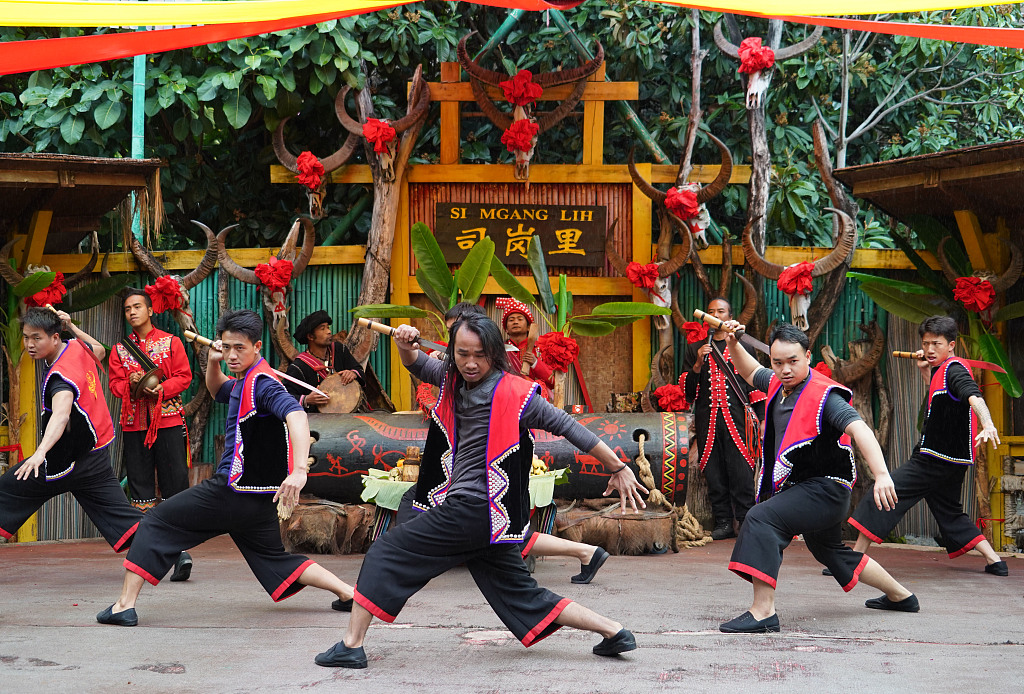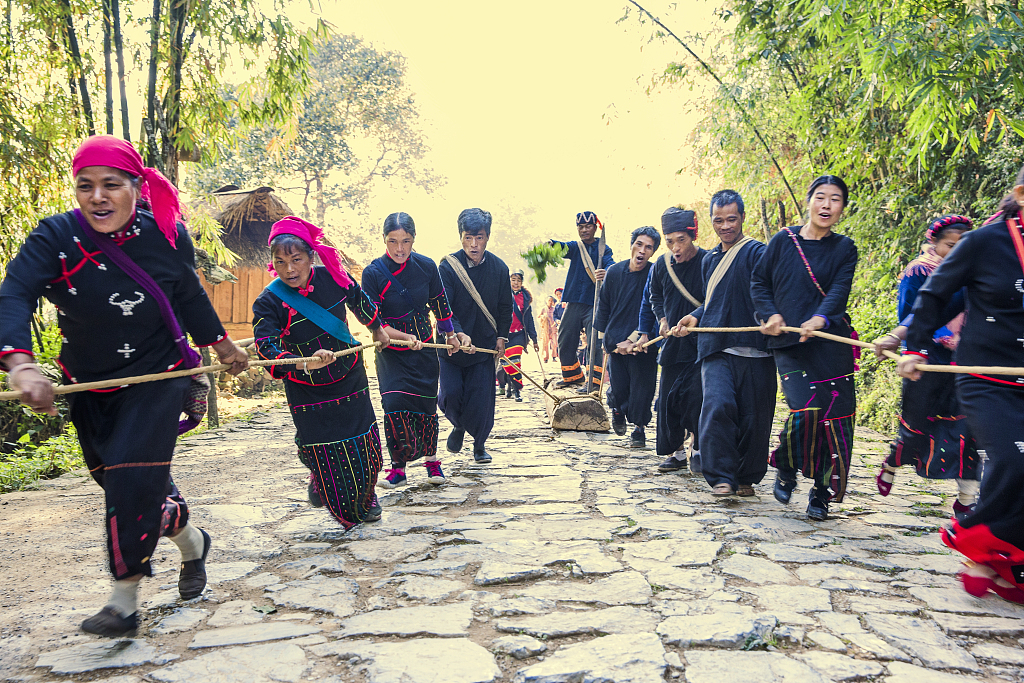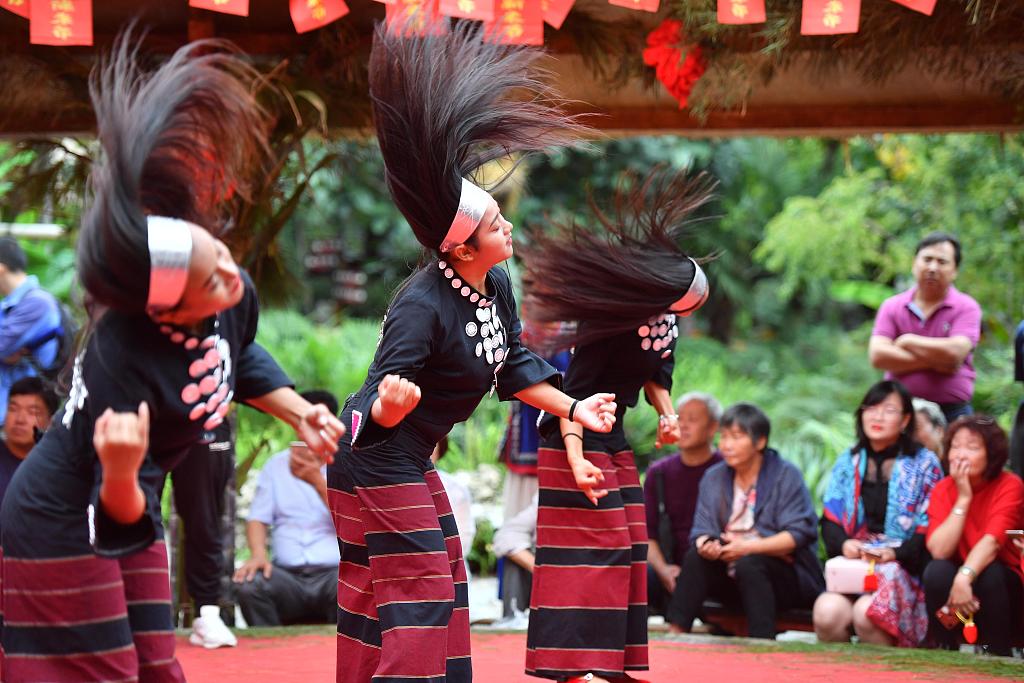People of the ethnic Wa group living in Ximeng Wa Autonomous County of Yunnan welcomed their highly anticipated, annual wooden drum festival on Monday.

Ethnic Wa performers stage a dance at a village in Kunming, Yunnan. /CFP
Ethnic Wa performers stage a dance at a village in Kunming, Yunnan. /CFP
In the past, Wa villages in Ximeng could celebrate this event any time after the dry rice was harvested. But since 2002 the date has been standardized from April 10 to 12 on the advice of local officials, in a bid to create a more festive atmosphere on a national level to better promote Wa culture.

Villagers pull part of a tree trunk that will be used to make the wooden drum. /CFP
Villagers pull part of a tree trunk that will be used to make the wooden drum. /CFP
During the three-day festival, the village head will select the best tree trunk from which to make the wooden drum and hold a sacrificial ritual around the chosen tree. On the following day, villagers sporting festive costumes will pull the timber back to the village. While the carpenter carves the drum from the trunk, all the other men and women sing and dance as one. This is also seen as a good opportunity for young people to make new friends and find their lovers.
The wooden drum, usually made from a section of trunk measuring two meters by 0.8 meters in diameter, is considered a divine object through which the Wa people can directly communicate with their gods. In the past, it was widely used as a ritual object. But nowadays it serves as an instrument during festivals. Dancing to the beat of the drum allows the Wa people to express their wishes for a happy life, good luck, and a bumper harvest. Girls and young women whip their long hair around their heads as part of one of their ceremonial dances.

Wa girls sling their long hair around their heads as part of a ceremonial dance. /CFP
Wa girls sling their long hair around their heads as part of a ceremonial dance. /CFP
There are more than 40,000 Wa people living in China, mainly in Yunnan. To promote their unique culture, local authorities stage various activities in some of their villages to highlight their cuisine, handicrafts, religion and popular forms of entertainment.